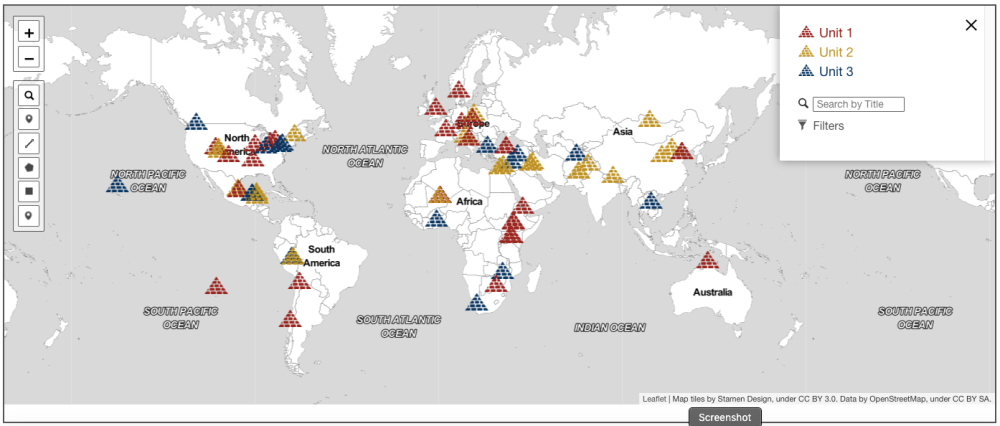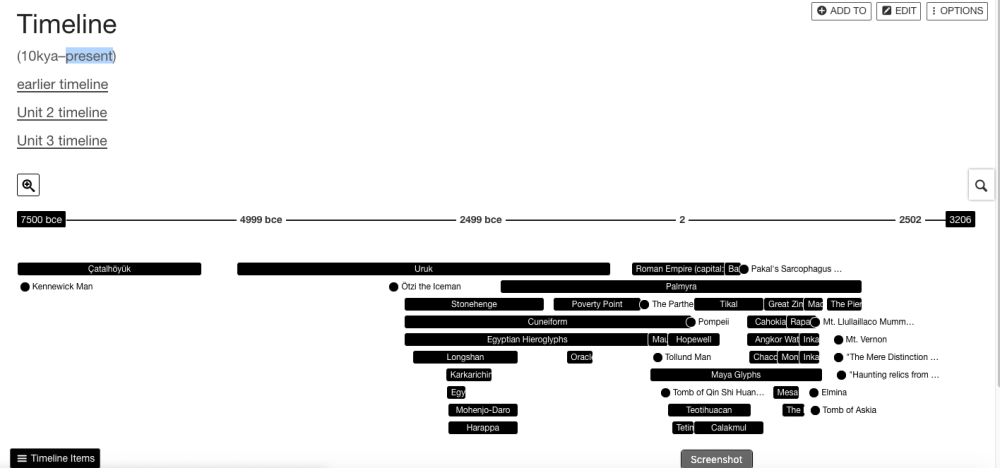By Laura Heath-Stout
When I was a TA, a student came to my office hours to tell me he was dropping the class after doing poorly on the first exam. He was interested in archaeology, and had been excited to take it, but English was his second language and the pace of the English lectures was difficult to follow. Besides, he had never heard of many of the places we studied, so he was often confused from the very beginning of class. I told him I would tutor him if he stayed in the course. We worked through the ancient societies of the Mediterranean together over the next couple of months, then briefly covered the Americas. I taught him that Pompeii was in Italy, that Italy was shaped like a boot. He was smart and hardworking, and asked good questions about how each society related to the others we had studied. Then, toward the end of the semester, we covered the terra cotta soldiers of Qin Shi Huangdi, the first emperor of China. My student had a new question: how did his classmates not know about Qin Shi Huangdi’s tomb, when he had learned all this information in elementary school?

I learned from this student that courses about ancient civilizations are designed with a certain kind of student in mind. This ideal student is most interested in and knowledgeable about the circum-Mediterranean cultures that are culturally constructed as the basis for Western civilization. They learn by sitting still through 80 minutes of fast-paced lecture in English, with little interaction with the teacher. Some students fit this description, but most don’t. So when I had the chance to teach “Great Discoveries in Archaeology” in Summer 2017, I made some changes (Unfortunately, I couldn’t change the course title!). I hope these ideas will help readers make their own introductory courses more inclusive.
1. Diversify Case Studies
The typical global archaeology survey course covers some regions and cultures in greater depth than others. Usually the areas explored in more depth are a mixture of the professor’s specialization and the other regions they have learned about throughout their education. In a white supremacist society, this often adds up to a focus on Mesopotamia, Egypt, Greece, and Rome, which are often imagined as foundational to Western society. Africa often gets especially short shrift: after covering early hominid species leaving Africa, the only mentions of the continent may be in reference to Ancient Egypt.
To diversify the sites and societies I covered in my course, I used UNESCO’s map of World Heritage Sites to identify interesting sites in Africa, Asia, Oceania, and the Pacific, and then researched them and added them to the syllabus. For example, I incorporated the Tomb of Askia into my lecture on monumental architecture, alongside the Egyptian pyramids that inspired its shape. I succeeded in covering much more of the world than most courses, as you can see in the map of sites studied in my class.

2. Provide Basic Information to Scaffold Case Studies
One of my struggling student’s biggest difficulties was a lack of context for information that is considered “common knowledge” in the United States. As instructors, we should not assume that every student knows what and where the Parthenon is, but that the existence of Angkor Wat is new information to all of them. I spend the beginning of every lecture situating sites in time and space to help students with differing knowledge bases contextualize the information I am about to share. Over the course of the semester, I add sites to the map shown above, and to the timeline shown below, so that as I point out each one, students can see how they relate geographically and temporally to other societies we have studied.

3. Proactively Accommodate Diverse Learning Styles and Abilities
Not all students learn by listening to long lectures. I mixed short lectures with small-group exercises, group discussion, hands-on activities (making quipus was a big hit!), video clips, and even field trips to visit the Boston City Archaeologist and the Museum of Fine Arts Boston. Of course, these initiatives were easier with my small summer term class than they would have been with hundreds of students during the semester, but even a big lecture course can be made interactive using, for example, techniques from James Lang’s Small Teaching.
I also made it clear from the first day of class that I am willing to accommodate a wide variety of student needs and preferences. My syllabus (inspired by and with parts borrowed from this blog post by Sandy Olson) says that:
We all learn in different ways. Please feel free to manage your classroom experience in the way that is best for you. You may make audio recordings of lectures or discussions, take pictures of the board, sit or stand wherever you like in the classroom, bring in food or beverages, leave the classroom when necessary, etc. Students who want transcripts for audio/visual material should let me know as soon as possible so that I can make them. If there is something I can do to create a more comfortable learning environment for you, please never hesitate to ask, even if you’re not registered with Disability Services.
Please do NOT use computers/tablets in class unless I give you permission: screens can be distracting to your classmates.
In this class, everyone has the right to go by the name and pronouns (e.g. she/her/hers, he/him/his, they/them/their) that they prefer. You may introduce yourself using whatever name you wish to use and should write your preferred name on all assignments. I prefer that my students call me Laura and I go by the pronouns she, her, and hers.
If you have a disability, you are encouraged to register with the Office of Disability Services to receive official accommodations for all your courses.
We went over these policies on the first day of class, establishing the course as a queer-positive, disability-inclusive space where I am ready to collaborate with my students to meet their needs.
4. Allow Students to Use Older Editions of the Textbook
My syllabus listed reading assignment page numbers in both the most recent edition of our textbook and the previous edition. This allowed students to buy used copies of the previous edition for a fraction of the cost of a new textbook. This made my course more accessible to students who do not have hundreds of dollars available for textbooks. I also placed copies of the textbook on reserve at the library so that students could read there rather than buying the text. The two editions were fairly similar, so students read almost exactly the same content!
I hope that the next time I teach an introductory course, I can make it even more inclusive. In the meantime, I hope that these ideas inspire you to shape your courses for the diverse students in your classrooms.
Thank you for such an engaging post. I would like to ask — is there a way to include laptops and other note taking devices into the classroom without signaling that folx who are using them as those with disabilities?
LikeLiked by 1 person
Commenter: you’re right! Laptop policy is really tricky. On the one hand, students using laptops in class may distract not only themselves but their classmates, so I’d rather not have most students using them. On the other, many students with disabilities need to use laptops, and I don’t want them to have to out themselves to the class in order to get their accommodations. If a non-disabled student asks for permission to use a laptop and makes clear that it helps their focus, I am willing to give that permission, but that hasn’t happened. I’m still grappling with how to deal with this conundrum! What do you think?
LikeLike
Accessibility of various forms is such an important issue that doesn’t get enough attention in university settings and as such I prefer to allow my students to use the tools they think are necessary to succeed in the classroom and to foster an inclusive learning environment. That being said, I agree that the worst thing about computers in a classroom isn’t the fact that we might lose the attention of one student who decides to go on facebook and tunes out 15 minutes discussion. The worst thing is that when that student chooses to do some browsing during class time then anyone who can see their screen is distracted! Taking the communal aspect of this issue to heart, a colleague of mine tells the students the first day of class that they may use their laptops and e-readers, BUT if one of them is ever caught on social media or doing otherwise distracting things that will inhibit their classmates learning, then the WHOLE class loses computer privilege. Sounds harsh, but most students don’t want to be that person and respect the rules for the duration of the course. It seems work 🙂
LikeLike